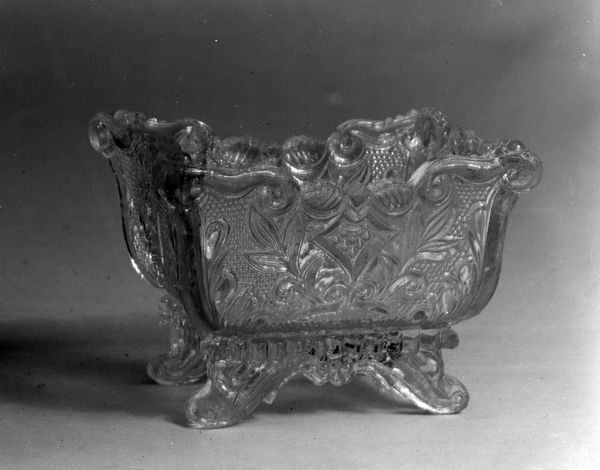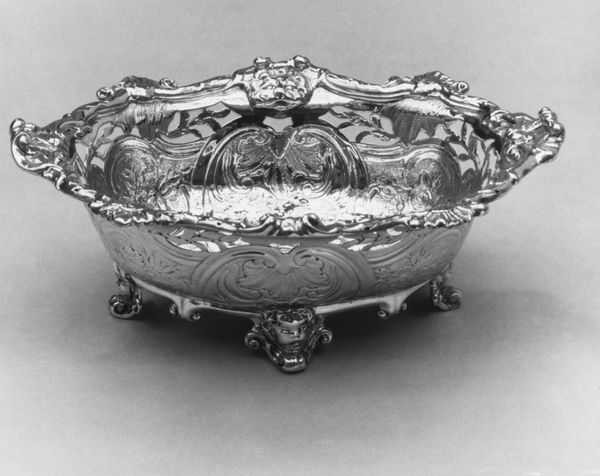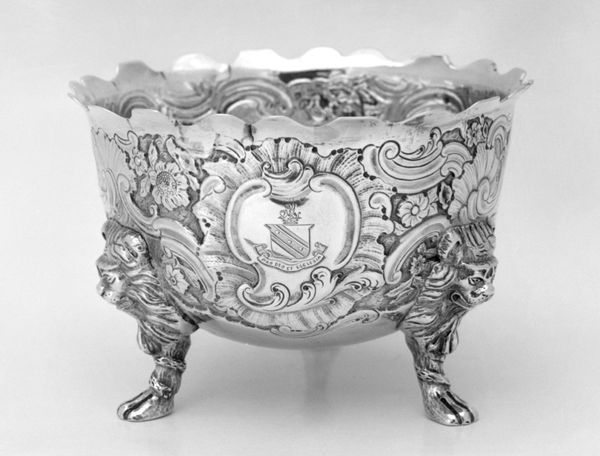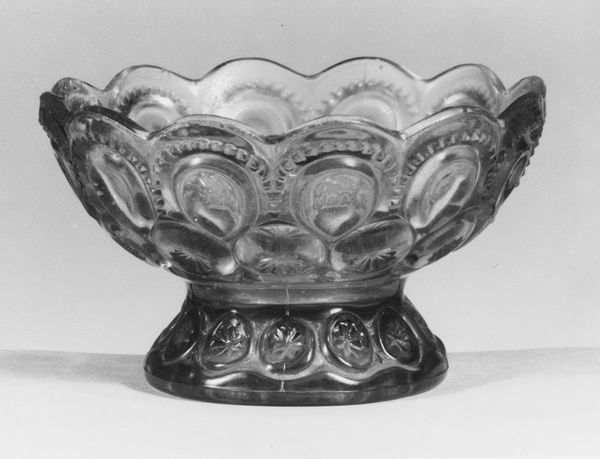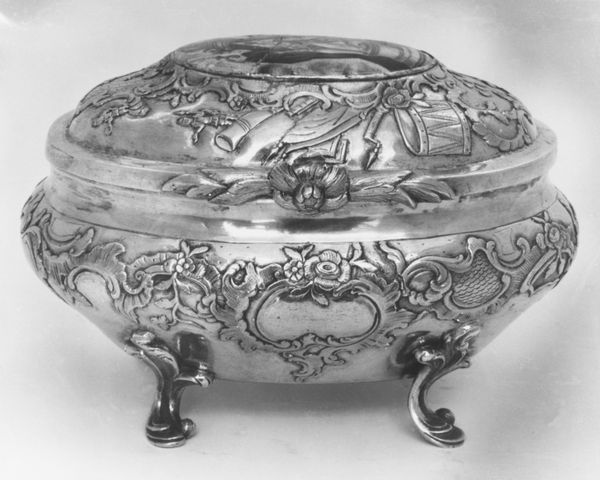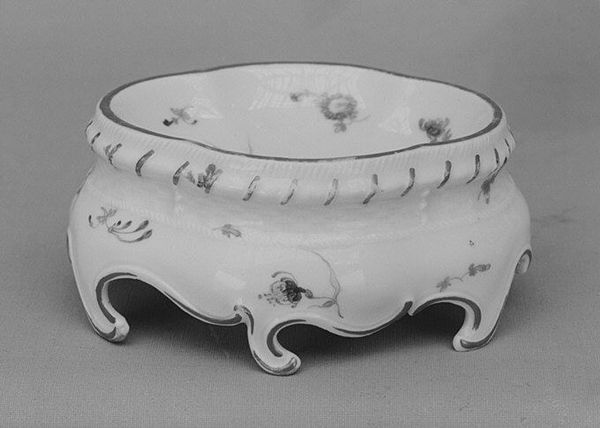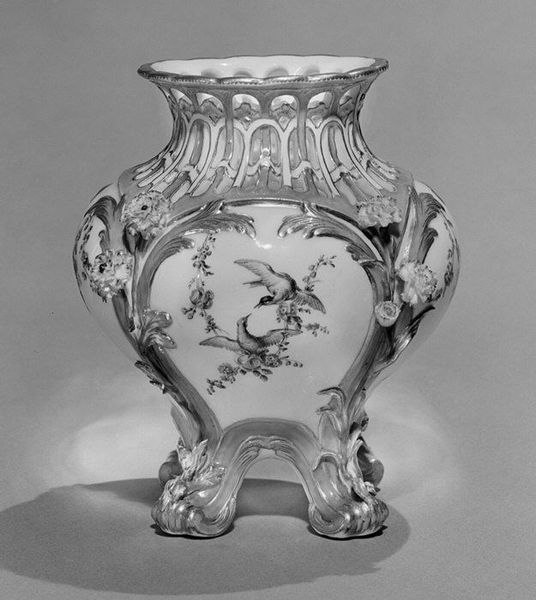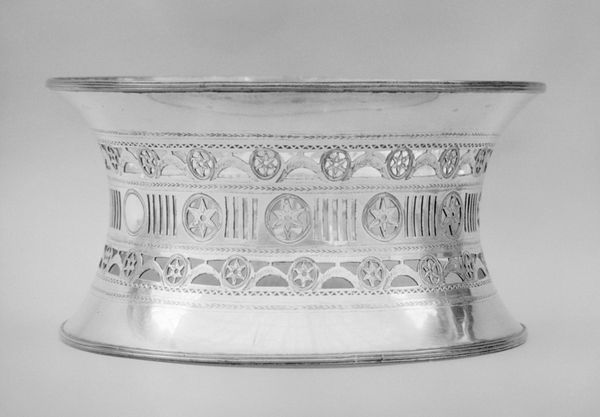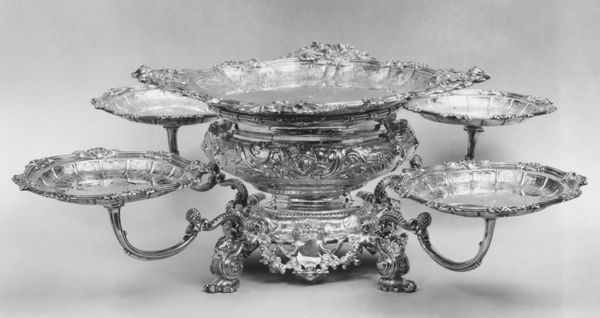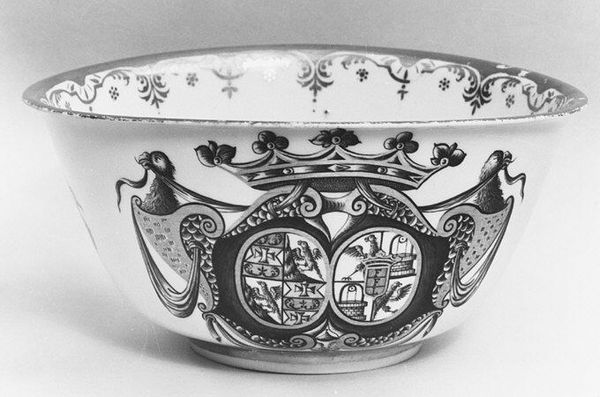
ceramic, glass, sculpture
#
sculpture
#
ceramic
#
glass
#
sculpture
#
decorative-art
Dimensions: 2 3/16 x 2 1/2 x 3 1/2 in. (5.6 x 6.4 x 8.9 cm)
Copyright: Public Domain
Curator: Here we have a Saltcellar made between 1831 and 1835 by the Providence Flint Glass Works. Editor: It’s ornate, isn't it? Almost fragile looking. I can imagine how it would look catching the light on a dining table. Curator: Saltcellars such as this reflect not only changing tastes but also evolving social rituals and power dynamics tied to conspicuous consumption. Glass, especially finely cut glass like this example, served as a symbol of status. It signified the owner had access to luxuries crafted through considerable labor. Editor: Absolutely, look at the detailed cutting—that’s highly skilled work! And given the time, you have to wonder about the glassworkers. Who were they? What were their working conditions like in those early factories? This object isn't just pretty; it's also a result of industrial processes, material extraction, and labor practices. Curator: Exactly. Furthermore, a seemingly simple object such as this offers a window onto the ideals of domesticity of the time. To consider gender, for example, one must analyze how maintaining refined tableware became tied to the performance of femininity and domestic skill within a burgeoning consumer culture. Editor: True. I imagine that this Saltcellar was meant for an affluent household, where dining customs upheld rigid social hierarchies. So, consuming from such a finely wrought object must have communicated specific messages. Curator: And that's precisely what makes the decorative arts so compelling; even items like saltcellars reveal societal beliefs regarding identity and status. They illuminate complex connections between people and objects. Editor: Indeed. For me, it speaks of artistry, technique, and even the grit of those whose hands made it real. We glimpse class, labour, design—it all converges. Curator: To really contemplate it, this one tiny dish gives voice to much greater, historical conversations on culture, class and gender. Editor: Yes, that perspective gives real gravity to something otherwise thought of as delicate or ephemeral. Thanks!
Comments
No comments
Be the first to comment and join the conversation on the ultimate creative platform.
